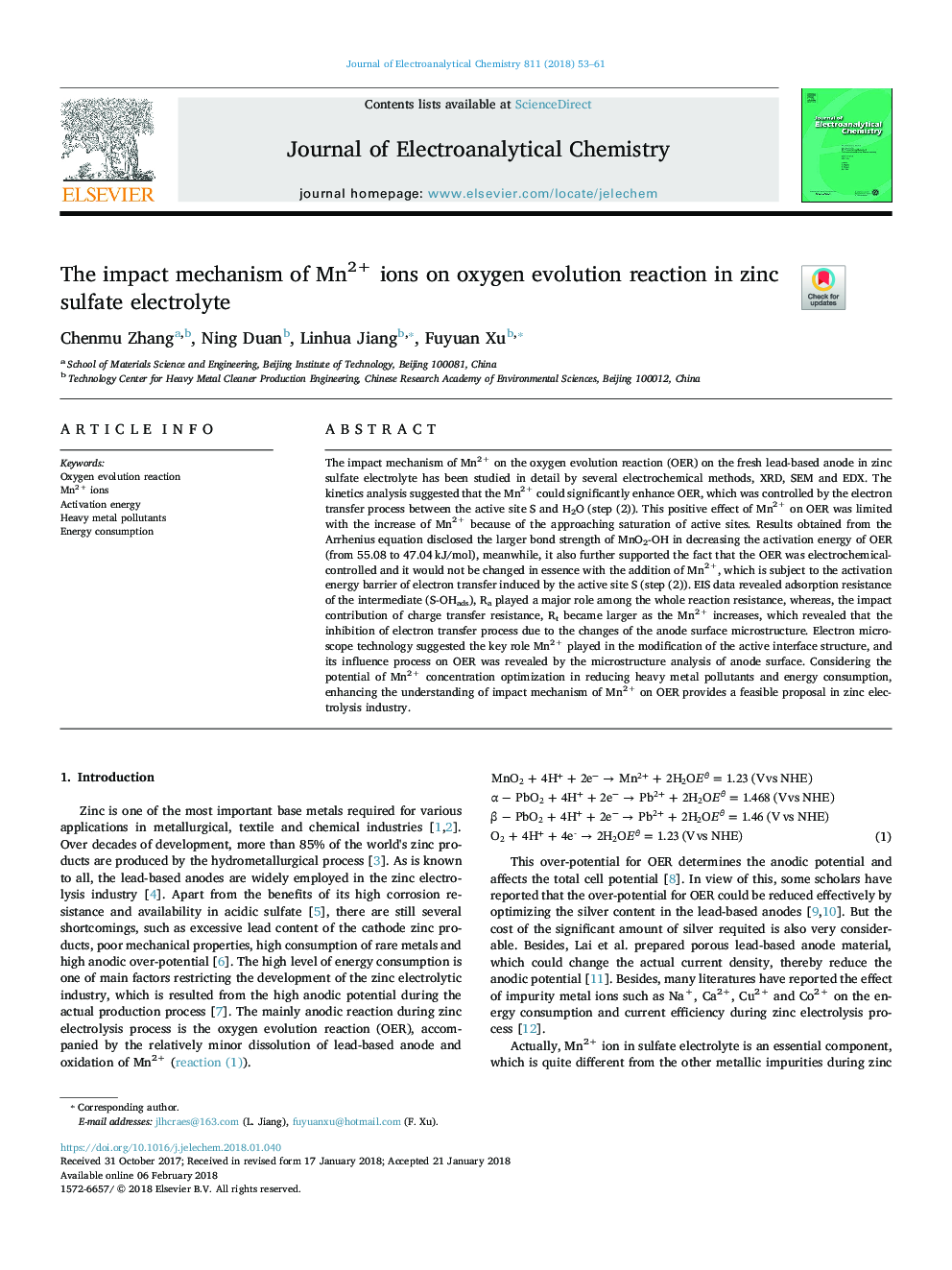| Article ID | Journal | Published Year | Pages | File Type |
|---|---|---|---|---|
| 6662072 | Journal of Electroanalytical Chemistry | 2018 | 9 Pages |
Abstract
The impact mechanism of Mn2+ on the oxygen evolution reaction (OER) on the fresh lead-based anode in zinc sulfate electrolyte has been studied in detail by several electrochemical methods, XRD, SEM and EDX. The kinetics analysis suggested that the Mn2+ could significantly enhance OER, which was controlled by the electron transfer process between the active site S and H2O (step (2)). This positive effect of Mn2+ on OER was limited with the increase of Mn2+ because of the approaching saturation of active sites. Results obtained from the Arrhenius equation disclosed the larger bond strength of MnO2-OH in decreasing the activation energy of OER (from 55.08 to 47.04â¯kJ/mol), meanwhile, it also further supported the fact that the OER was electrochemical-controlled and it would not be changed in essence with the addition of Mn2+, which is subject to the activation energy barrier of electron transfer induced by the active site S (step (2)). EIS data revealed adsorption resistance of the intermediate (S-OHads), Ra played a major role among the whole reaction resistance, whereas, the impact contribution of charge transfer resistance, Rt became larger as the Mn2+ increases, which revealed that the inhibition of electron transfer process due to the changes of the anode surface microstructure. Electron microscope technology suggested the key role Mn2+ played in the modification of the active interface structure, and its influence process on OER was revealed by the microstructure analysis of anode surface. Considering the potential of Mn2+ concentration optimization in reducing heavy metal pollutants and energy consumption, enhancing the understanding of impact mechanism of Mn2+ on OER provides a feasible proposal in zinc electrolysis industry.
Related Topics
Physical Sciences and Engineering
Chemical Engineering
Chemical Engineering (General)
Authors
Chenmu Zhang, Ning Duan, Linhua Jiang, Fuyuan Xu,
